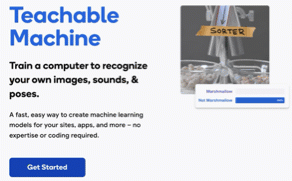AI Bootcamp
HMIA 2025

AI Bootcamp
HMIA 2025
"Readings"
PRE-CLASS
CLASS
Outline
- Programing vs Machine Learning
- AI landscape
- How machines learn
- Training/Deployment; pretraining/finetuning; supervised/unsupervised; RL/RLHF; loss & optimization
- Perceptron, neuron, layers, forward, backward
- Accuracy, precision, reliability, validity
- Bias/fairness
- Alignment
HMIA 2025 AI Bootcamp
HMIA 2025 AI Bootcamp
HMIA 2025 AI Bootcamp
PRE-CLASS
HMIA 2025 AI Bootcamp
PRE-CLASS
HMIA 2025 AI Bootcamp
PRE-CLASS
HMIA 2025 AI Bootcamp
PRE-CLASS
Intro to Machine Learning (ML Zero to Hero - Part 1) [7m17s]
HMIA 2025 AI Bootcamp
PRE-CLASS
HMIA 2025 AI Bootcamp
PRE-CLASS
HMIA 2025 AI Bootcamp
Text
3Blue1Brown: Large Language Models Explained Briefly [7m57s]
PRE-CLASS
HMIA 2025 AI Bootcamp
PRE-CLASS
HMIA 2025 AI Bootcamp
PRE-CLASS
Networks of Neurons
HMIA 2025 AI Bootcamp
CLASS

Imagine you are a worm learning how to move around in the world. You are constantly bumping into things. Some things are sharp and threatening. You can defend yourself against sharp, threatening things by curling into a ball. But if you curl into a ball everything something touches you, all the other worms will laugh and you'll never get anywhere.
So you have this neuron that responds to touch
and drives the curl-up action in response. How does the worm train the neuron to respond to the proper levels of touch (only curl up when you encounter a sharp and threatening touch)?
Let's suppose the neuron works like this: the input is a measure of the touch; this is compared to a threshold and if it is higher, the neuron triggers a curl-up action.
Initially, the threshold is zero: the worm curls up at the slightest touch. This happens a few times, touches of level 1 and level 2 and level 9, and the worm notices that nothing happened, the touch did not cause any harm. So, it raises the threshold to 1. Now when it gets a level 1 touch it just keeps moving. But level 2 touches cause it to curl up. And then some 5s and 6s and it curls up. Again, it notices that nothing happened so it raises the threshold to level 2.
This continues for a bit and it has raised the threshold to level 6. Then
one day, it gets a level 5 poke that really hurts — a sharp thorn or a
hidden barb. So the worm lowers its threshold by 1 to level 5. Now it curls up when it feels a level 5 poke. For a while, it seems to be avoiding injury quite well so it lowers the threshold to 4. Then it notices that sometimes a level 5 poke is painful but sometimes not and so it leaves the threshold at 4. The worm has learned an approximate rule: curl up when things feel like level 5 or higher — but not always, and not perfectly.
HMIA 2025 AI Bootcamp
CLASS

We all know about the game of guessing the number of jelly beans in a jar. And if you have taken a statistics you have heard of the "wisdom of the crowd" : we can ask a bunch of people to estimate and then we take the average of their guesses.
Could we teach a machine to learn how much to
trust each person’s guess — and adjust based
on feedback?
ROUND 1. Present the jar, record the guesses,
compute the average, reveal the actual number of
jelly beans.
Remind ourselves that computing the average is
the same as computing a weighted sum where the weights are all 1/n where n is the number of people guessing. We count the number of folks in the room
and compute 1/n. "This is your initial weight."
ROUND 2. We ask for show of hands: how many had a guess that was high? Low? If your guess last round was higher than the actual number, subtract 0.05 from your weight. If it was lower, add 0.05.
If you were spot-on, leave it as is.
Now we introduce a new jar and ask folks to write down their guess.
We have folks do a little math - multiply their
guess times their weight - and we add up all the results.
Then we reveal the actual number of jelly beans.
ROUND 3. We repeat the process.
STOP+THINK. What's going to happen to folks who consistently guess too low?
We can introduce some limits like "your weight can never go above 1 or below 0. Or, after we increment or decrement everyone's weights we could adjust them all so they still add up to 1. This would preserve the math of the weighted average.
STOP+THINK. Would it be better to add/subtract more weight from people who were really far off, and less from those who were just a little off?
HMIA 2025 AI Bootcamp
CLASS

HMIA 2025 AI Bootcamp


low
high
high
low
low
CLASS
HMIA 2025 AI Bootcamp

CLASS
HMIA 2025 AI Bootcamp
CLASS
Next Time on...
Social Science Bootcamp
preclass work is... .

HMIA 2025
HMIA 2025 AI Bootcamp
By Dan Ryan
HMIA 2025 AI Bootcamp
- 34




